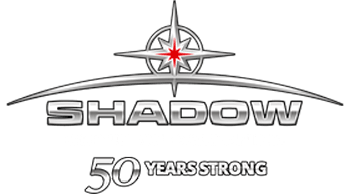Canada and the United States have a very unique relationship. They are the world’s largest trading partners. In fact, between the two countries, over $1.7 billion of goods and services are traded on a daily basis. For this reason, It’s good to know what services are available to you to help transport your materials.
We at Shadow Group offer 5 decades of experience delivering goods and services. This includes Container Drayage, Bulk Pneumatic, Line Haul, and more. Keep reading to learn more about Transportation and Logistics services between Canada and the United States.
Container Drayage
If your business requires the transportation of large quantities of materials, it’s important for operations to run smoothly. All the moving parts need to run like a well-oiled machine. And having a drayage system in place is one aspect of that machine that will help ensure a smooth performance from beginning to end.
“Drayage” is a reference to a certain logistic service that transports freight over small distances with ground freight.
Businesses that offer drayage services play a role in transporting freight from a particular city to another. It’s a valuable service, however, it isn’t appropriate for long distances, as it’s usually only used for small distances within the same province or state.
This type of distribution is used mostly as a single portion of a bigger procedure that encompasses a far greater distance.
Transloading
In this industry, everything is about logistics. And rightfully so, after all, what good is your product if you aren’t able to get it into the hands of the consumer? This is an integral and crucial function for businesses the world over. So when you have a large delivery with bulk materials and items, you’ll need the appropriate transportation system.
And for many, that will involve the process of transloading. Simply put: transloading is a procedure that transports a delivery from one particular transportation medium to another. For example, it could mean transitioning a delivery from rail to truck, or vice versa.
It could also mean transporting from truck to water, or water to rail, or any other variation you can imagine.
Line Haul
The line haul method of transportation involves the movement of products, freight, or materials. These items are then shipped between two locations by either train, plane, ship or truck. The line haul method is a division of delivery logistics. Moreover, its utility is found in its capacity to assist businesses and organizations with one main problem: determining the logistics for transporting goods between specified locations within a prearranged period of time.
A line haul carrier is a company that takes part in line haul operations. This includes offering shipping services, providing management, as well as following government rules.
Logistics Solutions
The devil’s in the details. It’s all about the small logistical components. Communicating with shippers, getting on the same page as truckers, speaking with receivers and manufacturers – the list is unending. And it’s all necessary to ensure a smooth product delivery.
To clear all of the transportation details, you must employ an airtight supply chain to get a handle on your logistics management. This is essential, especially if you find yourself shipping deliveries across the continental divide.
Bulk Pneumatic
Used to transport such commodities as oil & gas as well as bulk products from construction sites. Bulk Pneumatic transportation tankers are specially designed to transport large quantities of barite and dry-bulk chemicals safely and securely through the vastness of the Permian Basin.
Furthermore, Pneumatic tankers are fully closed off and secured shut, which stops air, dust, debris, insects, etc, from entering. As a result, the contents inside remain protected from condensation, steam, and other foreign matter.
Final Thoughts
There are many methods and systems of transporting your goods. Choosing one service over another will depend on multiple factors such as what you’re delivering, the distance of transportation, and other variables.
If you’d like to learn more, contact our team today with your questions or concerns, we’re here to help.
